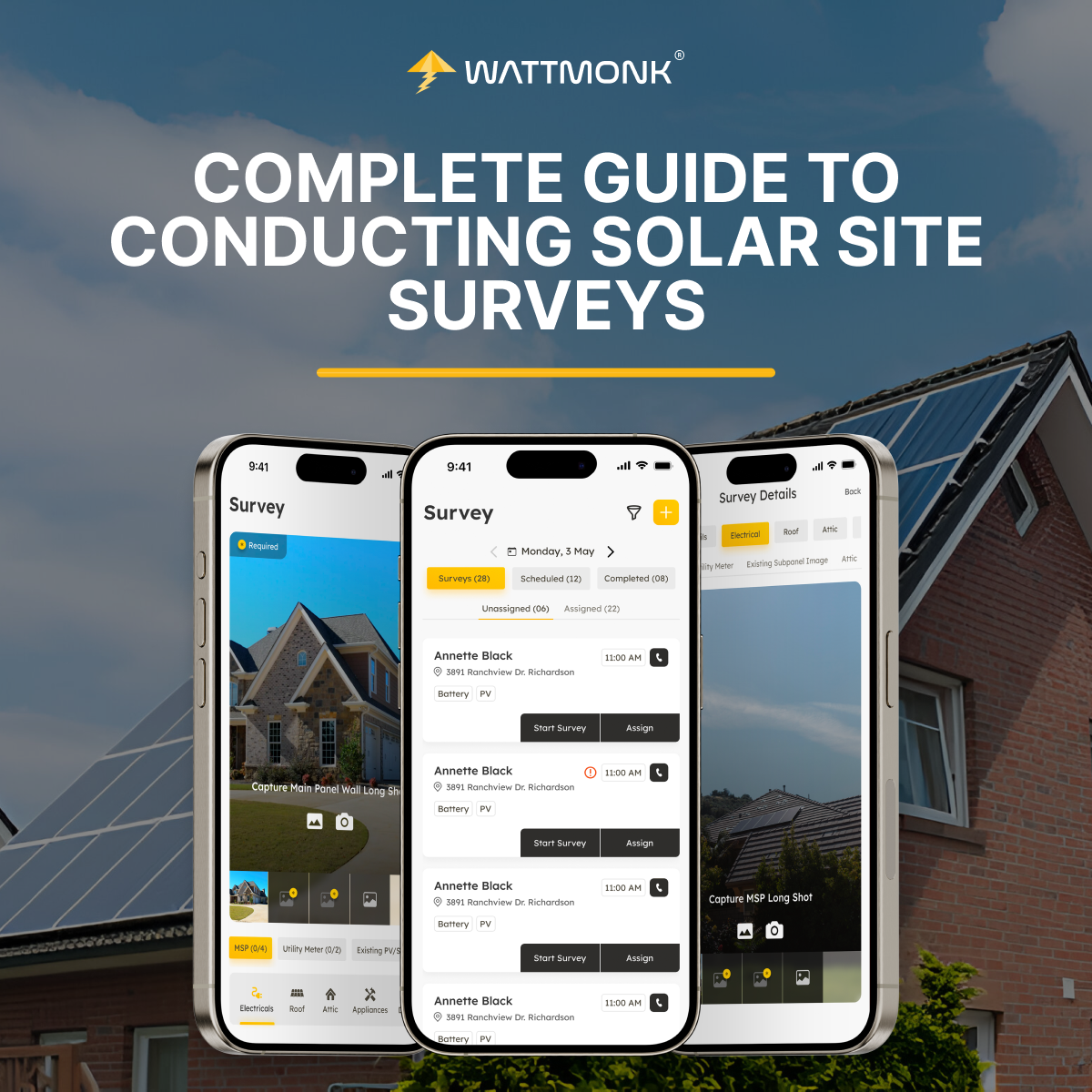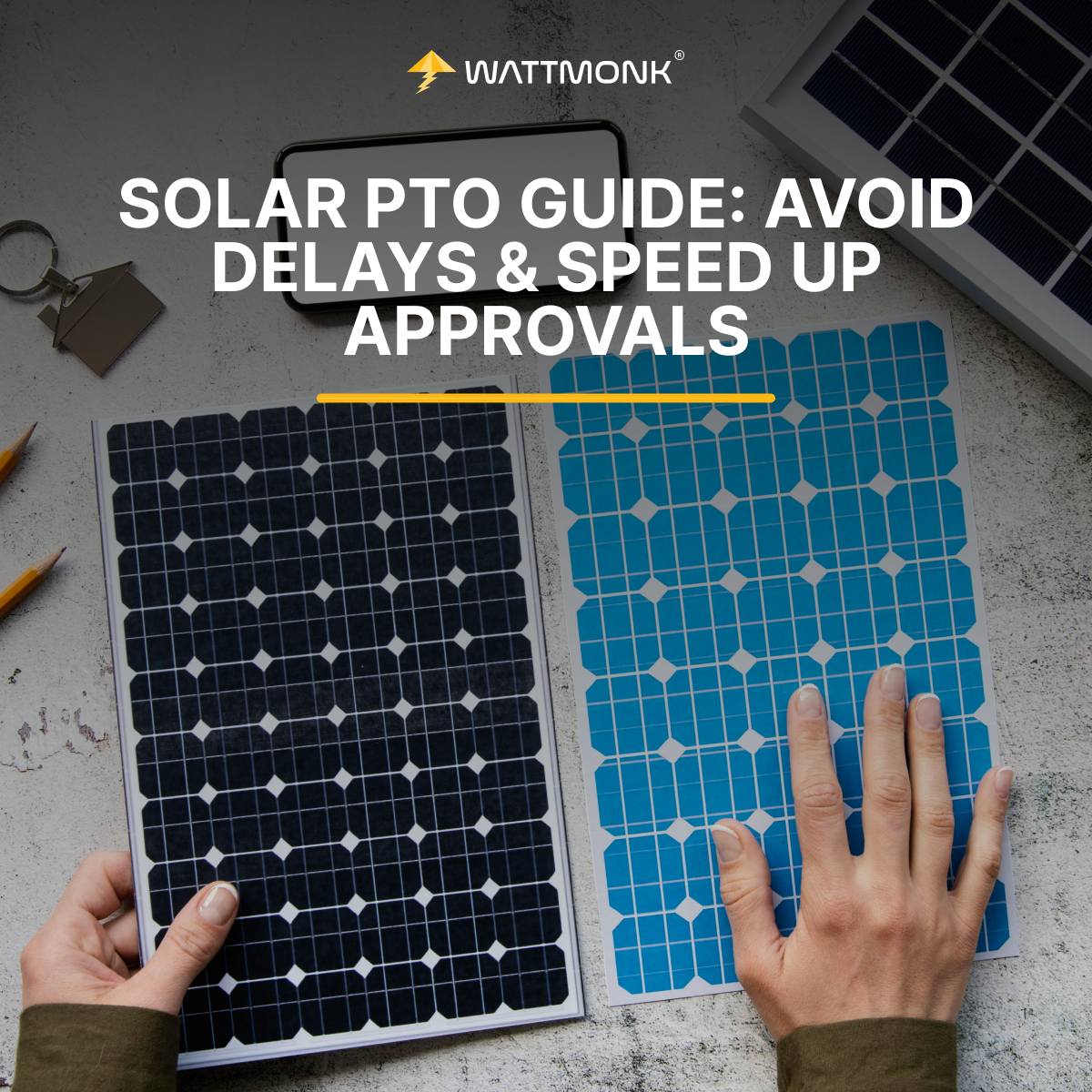According to the U.S. Energy Information Administration, 4.2 GW of solar projects were connected, while 17.8 GW had been planned—meaning nearly 20% of projects were postponed. Delays of this magnitude often originate from overlooked issues during the early stages like shading obstructions, or site-access challenges. That’s why the solar site survey isn’t just a formality—it’s the critical blueprint.
Whether you’re a seasoned solar installer or a homeowner looking to go solar, understanding how site surveys work can make the difference between a design that just fits and one that delivers optimal performance for 25+ years.
So here we will walk you through how a solar site survey works, what tools and forms are involved, and how it ultimately impacts design quality, permitting success, and long-term ROI.
Let’s begin with the bigger picture: why site surveys matter so much in any solar project.
Role of Solar Site Surveys in Project Planning
Every solar project starts with a promise of lower bills, cleaner energy, better living or business outcomes. But that promise can’t be fulfilled unless the foundation is solid. In solar, that foundation is the site survey. It provides the clarity needed to move from a good idea to a great system design.
For installers, it means fewer surprises and smoother approvals. For homeowners and commercial clients, it means confidence that what they’re investing in is tailored, feasible, and future-ready.
Solar site surveys help determine:
Shading and sun exposure: Solar site survey tools like shade analysis help identify potential obstructions (trees, chimneys, nearby structures) that can impact energy generation.
Roof condition and structure: It helps ensure the roof is suitable to bear the system load and meets code compliance.
Electrical service compatibility: Verifying main panel ratings and available breaker space for safe interconnection.
Mounting feasibility: It can help determine rafter positions or ground-mount space for equipment installation.
Solar site surveys also the transitional phase between the sales proposal and actual execution. While remote tools and satellite imagery can help build initial quotes, only a physical or high-fidelity digital site survey confirms the install’s true scope and feasibility.
Practical Walkthrough Of Conducting a Solar Site Survey
Conducting a solar site survey isn’t just about ticking boxes — it’s about gathering the right information, the first time. Whether you’re doing it on-site or remotely, this stage defines how accurate, efficient, and profitable your project will be.
Here’s what a well-executed survey typically involves:
Step 1: Pre-Survey Preparation
Before heading to the site, the surveyor should review:
The sales proposal or initial design (to align expectations)
Local permitting requirements
Available satellite imagery (to note potential challenges)
Step 2: Roof & Structural Assessment
On arrival, the focus shifts to the physical layout:
Measure the roof pitch, dimensions, and orientation
Check for obstructions (chimneys, vents, skylights)
Evaluate roofing material and structural integrity
Identify rafter spacing or truss layout
This helps ensure the system is not only code-compliant, but durable and optimized for performance.
Step 3: Shading and Sun Path Analysis
Using tools like our mobile app, the technician identifies shading from nearby trees, buildings, or objects. This step is critical for determining system performance — especially in residential installs or urban environments.
Step 4: Electrical System Review
Next, the surveyor inspects the main service panel to:
Confirm breaker availability
Note amp ratings, wiring condition, and space
Determine interconnection feasibility
Skipping this can result in costly design changes or AHJ rejections later in the process.
Step 5: Photographs and Documentation
Clear, geo-tagged photos of the roof, meter, service panel, attic (if applicable), and surrounding structures are captured. These visual records support:
Plan set creation
Permit application
Engineering review
Site Survey Toolkit: Equipment, Checklists, and Reporting Essentials
Behind every accurate site survey is a powerful combination of tools, templates, and tech. Whether the survey is conducted on-site or remotely, consistency in data collection is what enables clean designs, fast permits, and minimal rework.
Here’s a breakdown of the essentials used in today’s solar site survey:
Essential Tools for Field Technicians
For on-site surveys, field technicians typically carry:
Measuring tools: Laser distance meters, measuring tapes, inclinometers (to record roof pitch)
Shading tools: Solar Pathfinder, SunEye, or mobile shading apps for sun path analysis
Cameras or smartphones: For geo-tagged photos of the roof, electrical panel, attic, and obstructions
Ladders and safety gear: Especially for multi-story or steep-slope roof access
These tools capture the physical reality — down to every ridge, rafter, and shadow.
Site Survey Form & Checklist
A standardized form ensures no key data point is missed. Wattmonk uses a templated format that includes:
Project and customer details
Roof pitch, material, orientation, azimuth, shading notes
Photos of all relevant angles and equipment
Electrical panel specifications
Grounding and mounting conditions
Checklists reduce human error and create alignment between surveyors, designers, and permit teams.
Solar Site Survey Report
Once the data is captured, it’s compiled into a formal Site Survey Report — the core deliverable. This typically includes:
Annotated images and roof measurements
Shade analysis visuals
Summary of electrical conditions
Recommendations or notes for the design/engineering team
Wattmonk’s Site Survey App: Simpler, Smarter, Faster
At Wattmonk, we’ve developed a purpose-built mobile app to streamline the entire site survey process — making data collection, uploads, and coordination faster and more reliable for field teams and installers alike.
With our app, surveyors can:
Capture and upload photos in real time directly from the field
Fill out standardized site survey forms without needing external tools
Record roof pitch, dimensions, shading, and electrical specs within a guided flow
Track survey status, delivery timelines, and updates — all in one place
The result? No missed data. No email chains. Just accurate, ready-to-use reports delivered with speed and consistency — helping your project move straight into design, permitting, or engineering review.
Conduct Smarter Site Surveys with Wattmonk’s Expertise
A great solar installation doesn’t start with panels, it starts with precision and that begins at the site. From avoiding costly redesigns to getting faster permit approvals, the benefits of a well-executed site survey ripple through every phase of the solar project. It’s what transforms an initial idea into a system that’s safe, efficient, and built to perform for decades.
Whether you’re managing high volumes or just want more clarity in your design process, Wattmonk makes site surveys simpler. With our dedicated mobile app, expert support, and lightning-fast turnaround times, we take the guesswork out of ground truth so you can focus on scaling your solar business.
Need accurate, hassle-free site surveys? Explore our site survey services.


